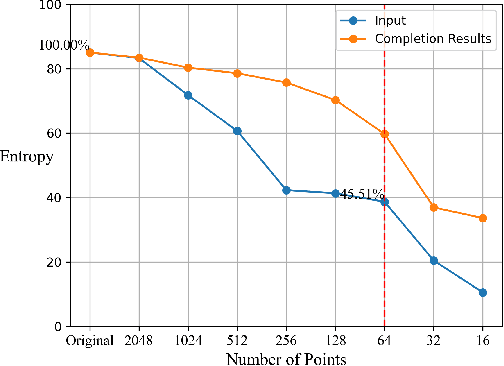Yajing Bai
Temporal Regularization Makes Your Video Generator Stronger
Mar 19, 2025Abstract:Temporal quality is a critical aspect of video generation, as it ensures consistent motion and realistic dynamics across frames. However, achieving high temporal coherence and diversity remains challenging. In this work, we explore temporal augmentation in video generation for the first time, and introduce FluxFlow for initial investigation, a strategy designed to enhance temporal quality. Operating at the data level, FluxFlow applies controlled temporal perturbations without requiring architectural modifications. Extensive experiments on UCF-101 and VBench benchmarks demonstrate that FluxFlow significantly improves temporal coherence and diversity across various video generation models, including U-Net, DiT, and AR-based architectures, while preserving spatial fidelity. These findings highlight the potential of temporal augmentation as a simple yet effective approach to advancing video generation quality.
LightGen: Efficient Image Generation through Knowledge Distillation and Direct Preference Optimization
Mar 11, 2025Abstract:Recent advances in text-to-image generation have primarily relied on extensive datasets and parameter-heavy architectures. These requirements severely limit accessibility for researchers and practitioners who lack substantial computational resources. In this paper, we introduce \model, an efficient training paradigm for image generation models that uses knowledge distillation (KD) and Direct Preference Optimization (DPO). Drawing inspiration from the success of data KD techniques widely adopted in Multi-Modal Large Language Models (MLLMs), LightGen distills knowledge from state-of-the-art (SOTA) text-to-image models into a compact Masked Autoregressive (MAR) architecture with only $0.7B$ parameters. Using a compact synthetic dataset of just $2M$ high-quality images generated from varied captions, we demonstrate that data diversity significantly outweighs data volume in determining model performance. This strategy dramatically reduces computational demands and reduces pre-training time from potentially thousands of GPU-days to merely 88 GPU-days. Furthermore, to address the inherent shortcomings of synthetic data, particularly poor high-frequency details and spatial inaccuracies, we integrate the DPO technique that refines image fidelity and positional accuracy. Comprehensive experiments confirm that LightGen achieves image generation quality comparable to SOTA models while significantly reducing computational resources and expanding accessibility for resource-constrained environments. Code is available at https://github.com/XianfengWu01/LightGen
GenBench: A Benchmarking Suite for Systematic Evaluation of Genomic Foundation Models
Jun 01, 2024



Abstract:The Genomic Foundation Model (GFM) paradigm is expected to facilitate the extraction of generalizable representations from massive genomic data, thereby enabling their application across a spectrum of downstream applications. Despite advancements, a lack of evaluation framework makes it difficult to ensure equitable assessment due to experimental settings, model intricacy, benchmark datasets, and reproducibility challenges. In the absence of standardization, comparative analyses risk becoming biased and unreliable. To surmount this impasse, we introduce GenBench, a comprehensive benchmarking suite specifically tailored for evaluating the efficacy of Genomic Foundation Models. GenBench offers a modular and expandable framework that encapsulates a variety of state-of-the-art methodologies. Through systematic evaluations of datasets spanning diverse biological domains with a particular emphasis on both short-range and long-range genomic tasks, firstly including the three most important DNA tasks covering Coding Region, Non-Coding Region, Genome Structure, etc. Moreover, We provide a nuanced analysis of the interplay between model architecture and dataset characteristics on task-specific performance. Our findings reveal an interesting observation: independent of the number of parameters, the discernible difference in preference between the attention-based and convolution-based models on short- and long-range tasks may provide insights into the future design of GFM.
FSC: Few-point Shape Completion
Mar 13, 2024



Abstract:While previous studies have demonstrated successful 3D object shape completion with a sufficient number of points, they often fail in scenarios when a few points, e.g. tens of points, are observed. Surprisingly, via entropy analysis, we find that even a few points, e.g. 64 points, could retain substantial information to help recover the 3D shape of the object. To address the challenge of shape completion with very sparse point clouds, we then propose Few-point Shape Completion (FSC) model, which contains a novel dual-branch feature extractor for handling extremely sparse inputs, coupled with an extensive branch for maximal point utilization with a saliency branch for dynamic importance assignment. This model is further bolstered by a two-stage revision network that refines both the extracted features and the decoder output, enhancing the detail and authenticity of the completed point cloud. Our experiments demonstrate the feasibility of recovering 3D shapes from a few points. The proposed Few-point Shape Completion (FSC) model outperforms previous methods on both few-point inputs and many-point inputs, and shows good generalizability to different object categories.
 Add to Chrome
Add to Chrome Add to Firefox
Add to Firefox Add to Edge
Add to Edge